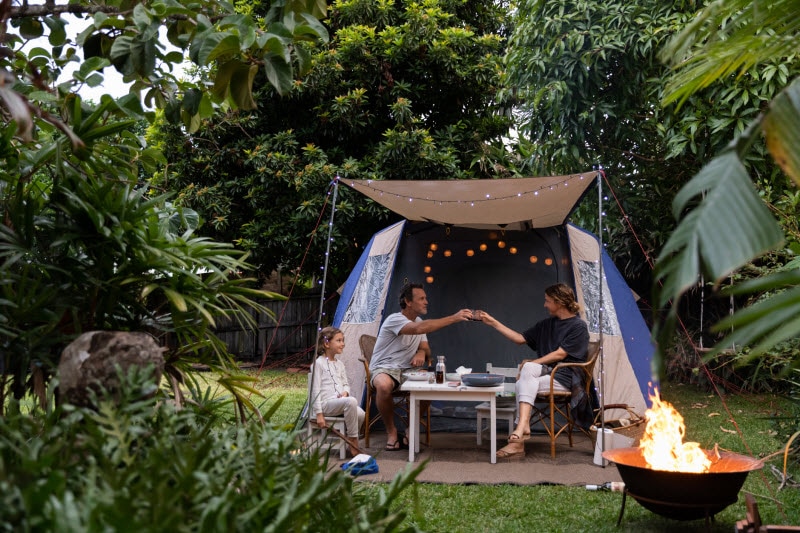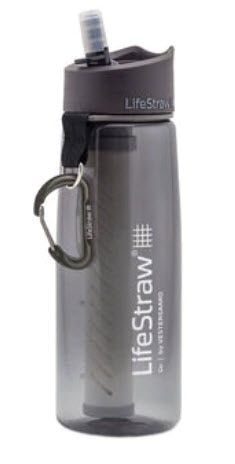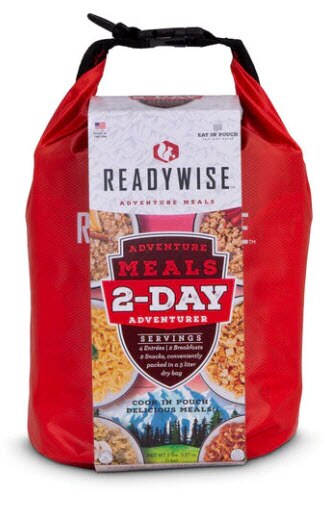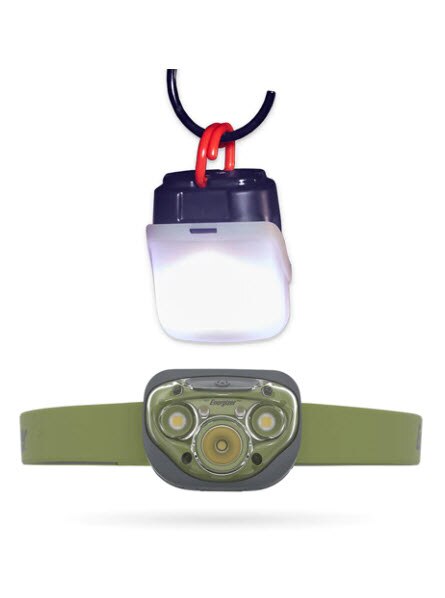Spend time in nature. Bring what you need. Respect the land. If I had three rules for camping, no matter how you experienced you are, these would be them. Spending time outside, immersed in a slowed down, untechified experience, unplugged and unleashed, is perhaps one of life’s greatest pleasures.
Camping offers the perfect getaway, but with one caveat: It does take a lot of prep, especially until you have systems in place. If you are new to camping, no better time to take yourself (and maybe friends and family) and your gear for a test run. Surrender to the idea there will always be something that did not go as planned. Murphy’s Law notwithstanding, here are some key camping tips to set you up for success.
Camping for Beginners: A Get Started Guide
Determine your location
1. Choose the best location to suit the season, accounting for possible rainfall, wind, and extreme temperatures. Consider which sites offer the most scenic seasonal views and if you require shade.
2. Another option is campgrounds that are open on a first-come, first-served basis. Booking months ahead isn’t required, but it’s a good idea to check with the campground to get tips on the best time to show up in order to snag a site. Often you need to get there early in the day before the sites are filled.
3. Recreation.gov is an online site that covers public lands campsite reservations nationwide. Hipcamp is a great resource for finding and reserving private lands campsites nationwide (and even worldwide).
4. If you are traveling with young children, some camping locations — like those that require a modest hike in — may be a bit too challenging for beginners. Choose a place that is accessible to each member of your group. Decide what’s most important to you in a campsite. Do you want proximity to the bathroom? Shade? Privacy?
5. What to expect: A typical campsite has a table, a place to park a car and to pitch a tent.
Pro Tip: Make your first trip short and close. You don’t need to head off for a whole week the first time you camp. A short camping trip won’t be as daunting as a longer one and will give you the chance to fix any issues or problems.
Figure out your tent
Your tent might be the most important gear you purchase. If this is your first camping trip, consider renting or borrowing a tent just so can familiarize yourself with how it feels. If you are ready to buy, consider these factors:
1. Go bigger than you think. If your budget can go a little bigger, then go bigger with your tent: A 3-person tent gives a cozy couple a little extra breathing room, and a family of four can more easily achieve harmony in a 6-person tent. Common tents include dome, A-frame, popup and ridge tents, though other variations are available.
2. Evaluate head clearance. Check the tent’s peak height if you want a tent that you can stand up in, which makes getting dressed and moving around easier to do.
3. Invest in a vestibule. Vestibules outside the doors are nice for stowing muddy shoes and extra gear. Having a two-door tent can help you avoid climbing over sleeping tentmates for late-night bathroom breaks.
Pro Tip: Don’t forget a properly sized footprint—if you have a ground sheet that’s too small, it won’t fully protect your tent floor, and if you have one that’s too big, it can catch rainwater and pool it underneath your tent.
Practice pitching your tent at home first
1. Choose a level spot: The place you pitch your tent must be on flat ground, preferably near shade, away from fire pits and mud, rocks or tree roots. Avoid pitching in areas where rainwater might gather and seep inside.
2. Be mindful of booby trap tent stakes: If using stakes to secure your tent or tarp, pack extra if possible. Be sure to stick stakes deep into the ground and always practice caution when walking near them—they are notorious tripping hazards.
3. Always use a tarp: Even if you think rain is not in the forecast, you want to avoid being surprised by a late night drizzle. A tarp helps insulate your tent from the elements. It’s also good for summer camping and will keep your tent from overheating.
Pro Tip: Consider having a practice camp out to iron out any kinks. After you’ve mastered the tent, plan a very local practice camping overnight. It can even be in your own backyard if that’s an option.
Choose your gear
You’ll need a long list of gear for an enjoyable camping trip. Sleeping pads and bags, flashlights, lighters for campfires, a machete for splitting logs, camping chairs and a bunch of other odds and ends (don’t forget hats!) will make you feel more comfortable in the elements. Mosquito spray, extra batteries, hand sanitizer, sunscreen/trash bags, rain gear, cleaning supplies biodegradable soap, sponges, a camp sink for doing dishes are also smart additions to your camping staples.
If you want to go all the way, plastic tablecloths and tablecloth clips for the picnic table, insect-repellant candles, small tables, shade structures and portable rain pavilions. An outdoor rug will help catch dirt and grass before you go inside your tent, RV or cabin. A light camping hammock is a wonderful touch, but many camping sites now require you to bring your own stand (tying a hammock to a tree can damage the bark).
Pro Tip: Make a camping essentials list, that’s customized to your family constellation, including resources for pets if you have them.
Organize your camp kitchen
1. You’ll need to invest in a camp stove—a classic two-burner propane stove such as a Coleman does the trick. A great way to cut down on expenses is to source your own mess kit—pots and pans, plates and utensils, cups and mugs—from your local Good Will or Salvation Army.
2. A cooler is almost non-negotiable. You might already have one and it will probably work just fine. Just be sure you have enough capacity for your perishable food and a few cold ones, along with enough ice.
3. Bring kitchen essentials, like pans, tongs, spatulas, a grill grate for cooking over the fire if desired, roasting forks, a coffee percolator, dishes and utensils. Make sure all pots and pans you bring are rated for campground use and can withstand cooking over an open flame or however you plan to prepare your meals.
4. Depending on how long you are going to stay, you’ll need a five-gallon jug for water. Some places you might need to bring your own water or have a filtration system.
Pro Tip: Pack all your kitchen gear in a large clear plastic bin with a lid. It’s easy to store away at home and everything will be ready next time you want to camp.
Camp cooking must-haves
Plan your meals beforehand—even the most seasoned campers figure out a loose roster of meals. Regardless of which camping recipes you choose to cook, there are some camp cooking must-haves that all campers should have on-hand:
1. Cooking essentials: Pantry staples like seasoning blends, spices, dried herbs, cooking oils, salt and pepper, condiments and sauces will give your food flavor. Choose your essentials based on your meal plan. For example, if you plan to barbecue or grill meats, you may want to bring along barbecue rubs or sauce.
2. Snack items: Choose non-perishable snacks that travel well, like kettle corn or popcorn, jerky, trail mix, chips, pretzels, cereal, granola or s’mores ingredients.
3. Meal staples: Proteins, starches and carbs will help keep you full and energized. Popular camping meals usually involve potatoes, eggs, grilling meats, breakfast meats, fresh produce, sandwiches, canned beans and soups, and bottled water, juice and soft drinks. Don’t forget coffee or tea and all the fixings. You can opt for a good quality instant coffee, or bring a camping version of your preferred method: Pour over, cowboy coffee, French press, stovetop expresso pot.
Pro Tip: Critters that hang around campgrounds are accomplished raiders, so don’t leave food or garbage out overnight, nor unattended. Seal up everything in a large bin anytime you’re away from camp and lock it in your vehicle at night. In bear country, check the local regulations—there might be established food lockers to put your food in because bears have been known to break into vehicles.
Setting up the campsite
Set your tent, bag and pad up early, so you don’t have to do it in the dark. When setting up your tent, try to pitch it in an area where the ground is level and clear of any debris which could cause damage to your tent. Always put the back of the tent to the wind to give it more stability and put your pegs into the ground at a 45-degree angle.
Soak it in
Now that you’ve prepped, packed and set up your campsite, the best is yet to come. Sit back in your camp chair and relax. The reward of the planning is self-sufficiency, comfort and ease in nature. A growing body of research shows that simply being in nature can reduce stress indicators such as cortisol. Whilst there are fewer papers focusing on camping, a study on overnight trips to the forest have found the trip lowered stress levels.
Exposure to nature not only makes you feel better psychologically, it contributes to your physical wellbeing, improves immunity and sleep, and reduces anxiety. Philosophers such as Aristotle recognized the salutary benefits of time spent outdoors. In his book Parts of Animals, Aristotle said, “In all things of nature there is something of the marvelous.” Go ahead. Kick back and discover your marvelous.




